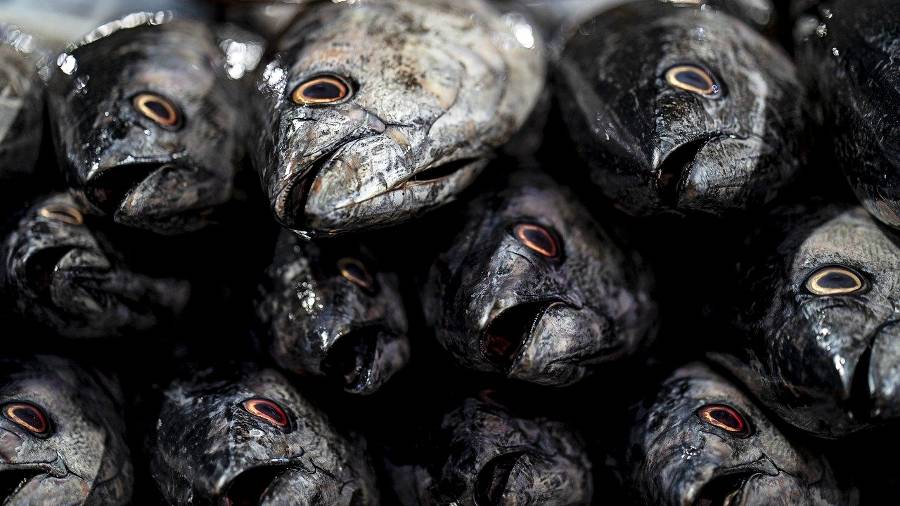Summary: Researchers have discovered molecules produced by fish gut bacteria that show potential as anti-wrinkle and skin-brightening agents, opening up new possibilities for natural cosmetic ingredients.
Estimated reading time: 6 minutes
The quest for new and effective skincare ingredients has taken an unexpected turn, leading scientists to explore the microscopic world living inside fish guts. A recent study published in ACS Omega reveals that certain bacteria found in the digestive tracts of red seabream and blackhead seabream produce compounds with promising anti-aging properties for skin.
This discovery adds to a growing trend of finding valuable substances in unexpected places, from snail slime to deep-sea microbes. The research team, led by Hyo-Jong Lee and Chung Sub Kim, identified 22 molecules produced by gut bacteria from these fish species and tested their potential benefits for skin health.
Why it matters
The cosmetics industry is constantly searching for new, effective, and preferably natural ingredients to improve skincare products. This research not only introduces potential new compounds for anti-aging formulations but also highlights the vast untapped potential of marine microorganisms as sources of beneficial molecules.
Diving into Fish Gut Chemistry
The researchers focused on two bacterial species: Ruegeria atlantica, found in red seabream, and Pseudoalteromonas neustonica, inhabiting blackhead seabream guts. These bacteria were first identified in 1992 and 2016 respectively, but their metabolic products had not been studied until now.
Using sophisticated analytical techniques, the team isolated and identified 22 different compounds produced by these bacteria. They then tested each compound’s ability to inhibit two enzymes crucial in skin aging processes:
- Tyrosinase: responsible for melanin production, which can cause age spots and uneven skin tone
- Collagenase: breaks down collagen, leading to wrinkle formation
The results were promising. Three molecules from the red seabream bacteria stood out, showing the ability to inhibit both enzymes without causing harm to cells. This dual action makes these compounds particularly interesting as potential anti-wrinkle and skin-brightening agents.
From Fish Guts to Face Creams?
While the idea of putting fish gut bacteria derivatives on your face might seem strange, it’s not without precedent in the cosmetics world. The industry has a history of embracing unusual ingredients, from snail mucin to placenta extracts, in the pursuit of effective skincare solutions.
The most promising compound identified in the study, cyclo(L-Pro-D-Leu), showed stability under heat and UV light exposure for up to six days. This stability is crucial for the practical application of the compound in cosmetic formulations, as it suggests the molecule could maintain its effectiveness in various product types and storage conditions.
However, it’s important to note that this research is still in its early stages. The tests were conducted on lab-grown mouse cells, and much more research is needed to determine the compounds’ safety and efficacy in human skin applications.
Implications for the Cosmetics Industry
This research opens up several exciting possibilities for the cosmetics industry:
- New natural ingredients: As consumers increasingly seek natural and sustainable skincare options, these marine-derived compounds could offer a novel source of effective ingredients.
- Dual-action products: The ability of these compounds to target both wrinkles and skin discoloration could lead to more efficient, multi-purpose skincare formulations.
- Expanded research focus: This study may encourage more research into marine microorganisms as sources of beneficial compounds for various applications beyond skincare.
- Sustainable sourcing: If these compounds can be produced through bacterial fermentation, it could provide a sustainable alternative to harvesting ingredients from marine environments.
Challenges and Future Research
While the findings are promising, several challenges need to be addressed before these compounds make their way into your skincare routine:
- Safety testing: Extensive studies will be needed to ensure these compounds are safe for human use on skin.
- Efficacy in formulations: The compounds will need to be tested in actual skincare formulations to determine if they remain effective when combined with other ingredients.
- Scale-up and production: Researchers will need to develop efficient methods to produce these compounds in quantities sufficient for commercial use.
- Regulatory approval: Any new cosmetic ingredient must go through regulatory approval processes before it can be used in consumer products.
As research progresses, we may see these fish gut-derived compounds joining the ranks of other unusual but effective skincare ingredients. This study serves as a reminder of the vast potential for discovery that exists in the natural world, even in the most unexpected places.
Quiz:
- Which two fish species were the gut bacteria isolated from? a) Salmon and tuna b) Red seabream and blackhead seabream c) Cod and halibut
- How many compounds were isolated from the fish gut bacteria in total? a) 10 b) 22 c) 30
- Which enzyme is responsible for breaking down collagen in the skin? a) Tyrosinase b) Collagenase c) Melanase
Answers:
- b) Red seabream and blackhead seabream
- b) 22
- b) Collagenase
If our reporting has informed or inspired you, please consider making a donation. Every contribution, no matter the size, empowers us to continue delivering accurate, engaging, and trustworthy science and medical news. Independent journalism requires time, effort, and resources—your support ensures we can keep uncovering the stories that matter most to you.
Join us in making knowledge accessible and impactful. Thank you for standing with us!

